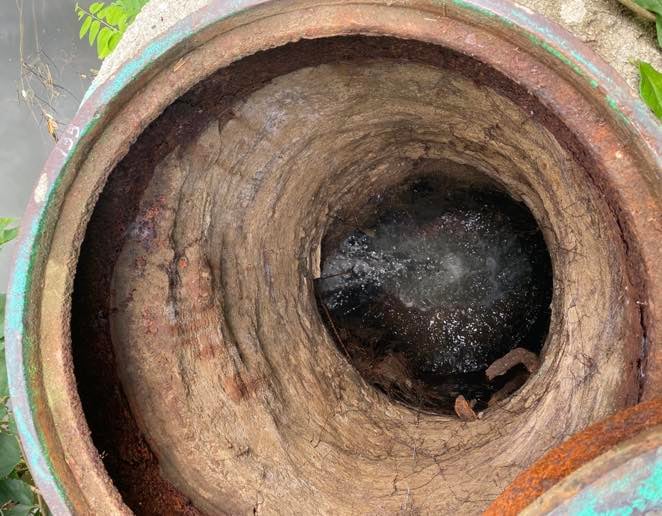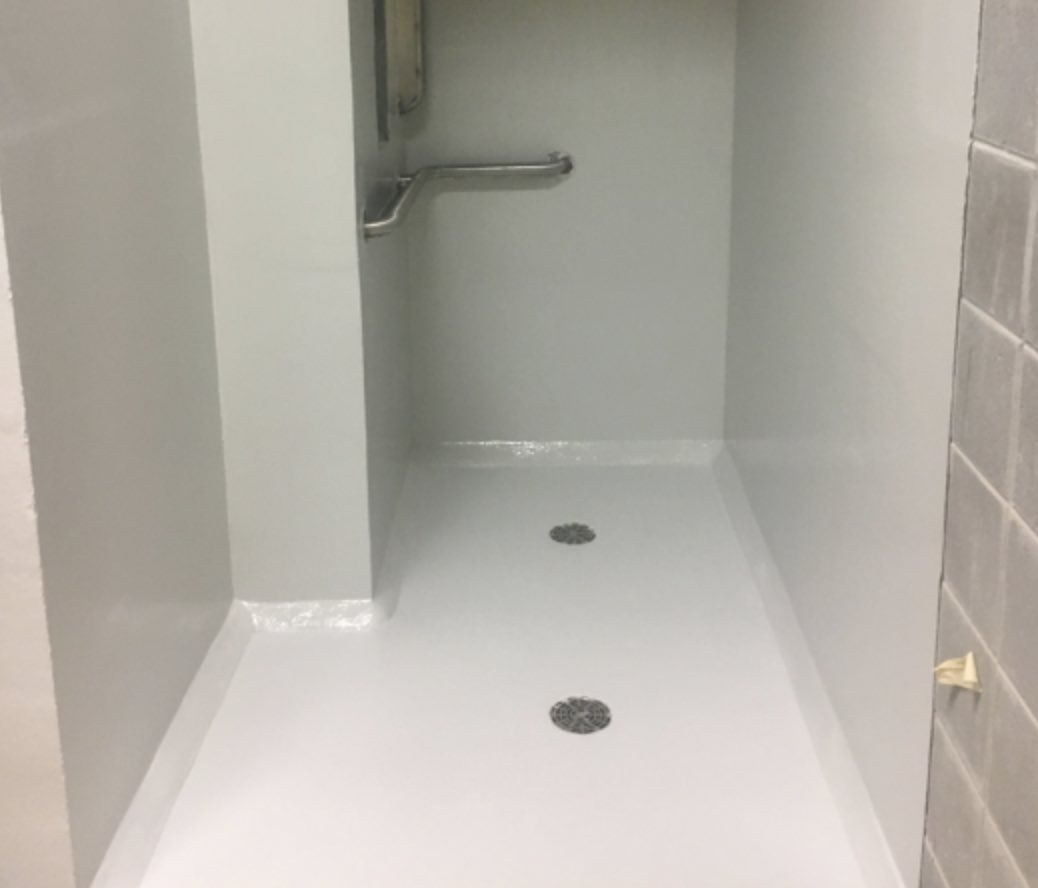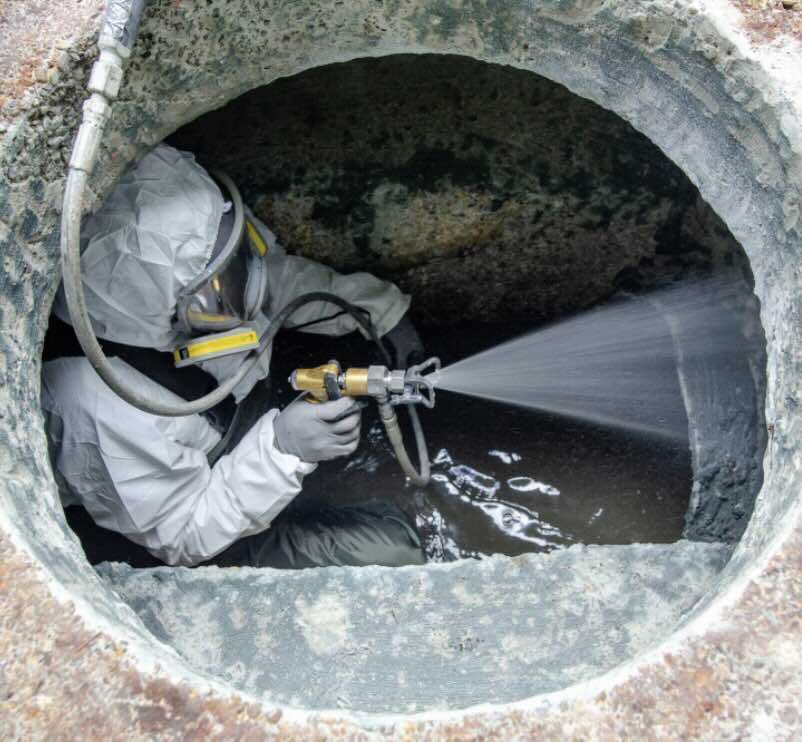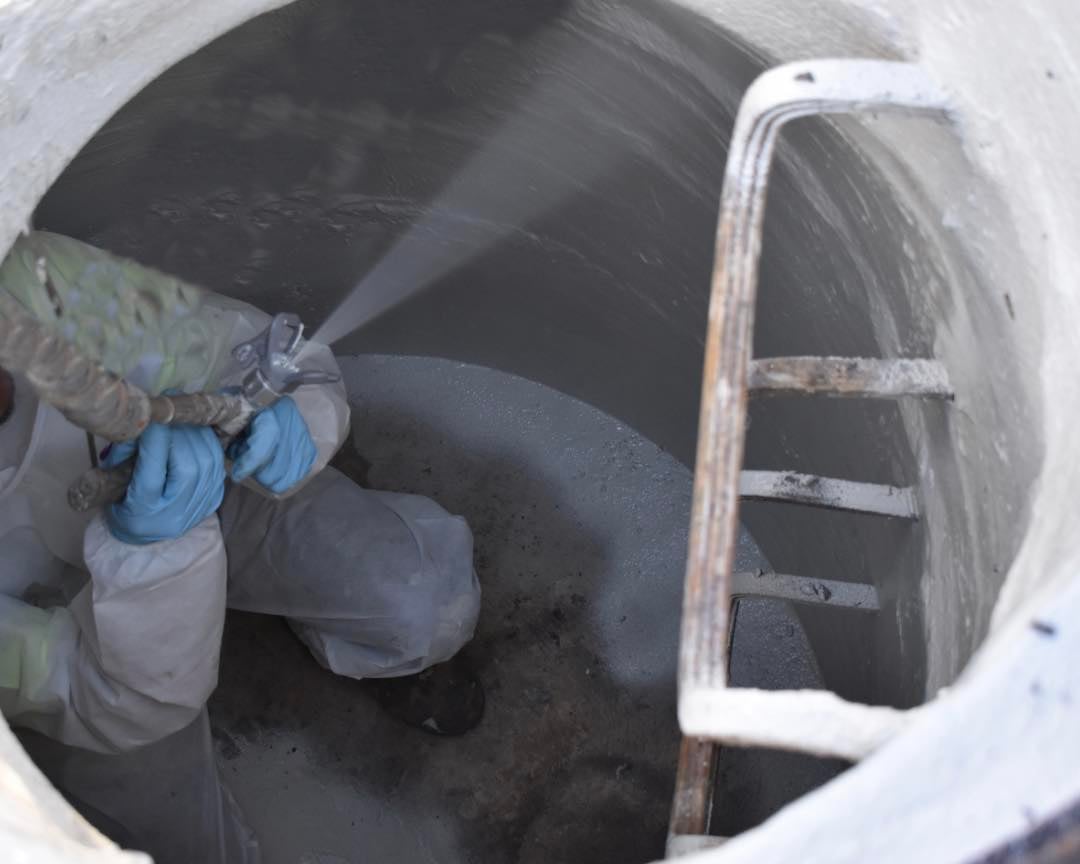
Comparing Structural Epoxy to Other Repair Materials
Structural epoxy and cementitious repair materials are both commonly used to repair and rehabilitate manholes, but they have some differences.
- High Performance Coatings
Structural epoxy and cementitious repair materials are both commonly used to repair and rehabilitate manholes
Choosing the Right Material for Manhole Rehabilitation:
Infrastructure rehabilitation is a critical aspect of municipal maintenance, particularly when it comes to wastewater systems. Manholes, which provide access to underground utilities, are especially vulnerable to deterioration due to constant exposure to corrosive environments. When selecting rehabilitation materials, two primary options dominate the market: structural epoxy systems and cementitious repair materials.
This comprehensive analysis examines the performance characteristics, application methods, and cost considerations of both options to help infrastructure professionals make informed decisions.
Structural Epoxy Systems: The High-Performance Solution
Structural epoxy systems (such as Epoxytec CPP Sprayliner or CPP Troweliner) are sophisticated two-component systems consisting of a resin and hardener that chemically react to form a robust, high-strength polymer matrix. These systems offer exceptional performance in challenging environments:
- Outstanding Chemical Resistance: Epoxy systems can withstand pH levels from 1-14, making them ideal for the highly corrosive environment of wastewater systems
- Superior Adhesion: With adhesion strength typically exceeding 3,000 psi, these systems bond tenaciously to properly prepared concrete substrates
- Impermeability: The seamless, non-porous surface effectively prevents infiltration and inflow (I&I)
- Rapid Return to Service: Most systems cure within 24 hours, minimizing operational disruptions
Modern structural epoxy systems are engineered specifically for wastewater applications, with specialized formulations addressing common challenges such as high humidity, active leaks, and variable substrate conditions.
Cementitious Repair Materials: The Traditional Approach
Cementitious repair materials comprise cement-based compounds enhanced with various admixtures to improve performance characteristics. These materials have been the traditional choice for concrete rehabilitation:
- Mineral-Based Chemistry: Being primarily composed of Portland cement and supplementary cementitious materials, these products share similar properties with the original concrete substrate
- Moderate Cost: Generally less expensive per unit area than epoxy alternatives
- Familiar Application: Contractors often have extensive experience with these materials, requiring less specialized training
- Limited Chemical Resistance: Typically effective within pH range of 5-11, making them vulnerable in highly acidic environments
- Porosity Concerns: Even enhanced formulations remain somewhat permeable, potentially allowing water penetration
While advances in cementitious technology have improved performance, these materials still face inherent limitations in severely corrosive environments.
Performance Comparison: Why Structural Epoxy Often Outperforms

The data clearly demonstrates several key advantages of structural epoxy systems:
1. Extended Service Life
Properly installed epoxy systems typically provide 25-50 years of service life in wastewater environments, compared to 10-15 years for cementitious materials. This dramatic difference stems from epoxy's superior resistance to:
- Microbiologically induced corrosion (MIC)
- Hydrogen sulfide (H₂S) exposure
- Continuous wet/dry cycling
- Freeze/thaw deterioration

2. Superior Chemical Resistance
Wastewater environments present a challenging chemical profile. Structural epoxy systems maintain structural integrity across the entire pH spectrum (1-14), while cementitious materials begin to degrade at pH levels below 5 or above 11. This advantage becomes particularly significant in industrial areas where wastewater chemistry may be more aggressive.
3. Application Advantages
While both materials require proper surface preparation, epoxy systems offer several application benefits:
- Thinner Application: Typical application thickness of 80-125 mils compared to 0.5-2 inches for cementitious materials
- Lighter Weight: Adds minimal load to existing structures
- Higher Build: Can build greater thickness in vertical and overhead applications without sagging
- Lower Temperature Application: Most specialized epoxy systems can be applied at temperatures as low as 40°F, compared to 45-50°F minimum for many cementitious products
4. Total Cost Consideration

While initial material costs for structural epoxy are typically 40-60% higher than cementitious alternatives, the total lifecycle cost analysis presents a different picture:
- Reduced Labor: Faster application and cure times reduce labor costs
- Extended Rehabilitation Intervals: Less frequent rehabilitation requirements
- Lower Failure Risk: Reduced likelihood of premature failure and associated emergency repair costs
When analyzed over a 50-year timeframe, high-performance epoxy systems typically demonstrate a 20-30% lower total cost of ownership compared to cementitious alternatives.
Application Considerations: Choosing the Right Solution
Despite epoxy's performance advantages, certain situations may favor cementitious materials:
- Budget Constraints: When immediate budget limitations outweigh lifecycle cost considerations
- Short-Term Repairs: For structures slated for replacement within 5-10 years
- Active Water Infiltration: When specialized water-stop materials are needed before final coating
- Extreme Cold Weather: In uncontrolled environments below 40°F where specialized epoxy systems may not be feasible
The optimal approach often involves a combination of materials—using cementitious products to rebuild severely deteriorated areas, followed by an epoxy coating system for long-term protection.
Case Study: Monroe County Performance Analysis
A 2023 study by Monroe County Water Authority compared 32 manholes rehabilitated with either structural epoxy or enhanced cementitious materials over a 15-year period. Key findings included:
- 94% of epoxy-coated manholes remained in "excellent" condition after 15 years
- Only 38% of cementitious-repaired manholes maintained "good" or better condition over the same period
- Average rehabilitation cycle for epoxy-coated manholes: 28 years (projected)
- Average rehabilitation cycle for cementitious-repaired manholes: 12 years
Conclusion: Making an Informed Decision
The choice between structural epoxy and cementitious repair materials ultimately depends on your specific project requirements:
Consider Structural Epoxy When:
- Long-term performance is critical
- Harsh chemical environments are present
- I&I prevention is a priority
- Rapid return to service is necessary
- Total lifecycle cost is the primary consideration
Consider Cementitious Materials When:
- Initial cost is the primary constraint
- The structure has a limited remaining service life
- Extreme environmental conditions prevent epoxy application
- Deep structural rebuilding is required prior to protective coating
For most wastewater manhole rehabilitation projects, a high-performance structural epoxy system provides the optimal balance of performance, durability, and long-term cost efficiency.
Next Steps for Infrastructure Managers
- Conduct a Condition Assessment: Evaluate the current state of your infrastructure
- Define Performance Requirements: Identify the specific challenges your system faces
- Calculate Lifecycle Costs: Look beyond initial expenditure to total ownership cost
- Consult with Specialists: Engage with manufacturers who can provide case studies relevant to your specific conditions
By taking a systematic approach to material selection, infrastructure managers can maximize the return on rehabilitation investments while ensuring long-term system integrity.
LET OUR KNOWLEDGE AND EXPERTISE HELP ENSURE YOUR NEXT PROJECT IS SUCCESSFUL
Check out these additional resources:
Don't miss these projects:

Where to use a Fiberglass Reinforced Wall System
Epoxy mat layup wall systems, like Tnemec...

Rave Reviews: EpoxyTec CPP Sprayliner in Action
